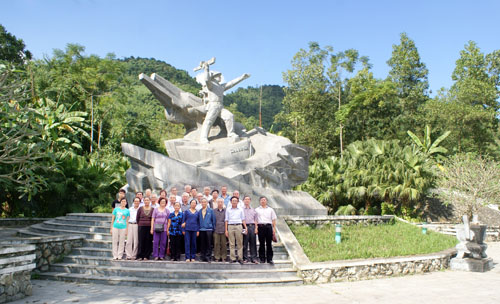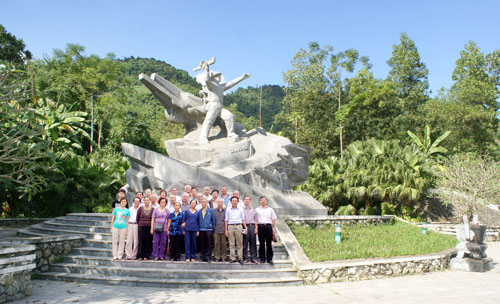
(HBO) - Currently there are 94 cultural and historical relics, revolutionary historical sites and landscapes that have been ranked in the whole province. They include 53 provincial-level relics and 41 national-level ones.

Since the beginning of the year, the Department of Culture,
Sports and Tourism has submitted to the provincial People's Committee and
awarded the ranking certificates to 7 cultural relics at the provincial level.
They include Truong Temple Relics (Lac Son), Boi Pagoda (Kim Boi). the venue
for the First Party Congress of Hoa Binh province (1948) in Dinh Lap, Lap Ch
Chap commune (Kim Boi). "The Area for the uprising against the French by the
General Kiem - Doc Bang Army, Ky Son district”, "The location of the
establishment of the 12th Regiment - Hoa Binh” in Cao Phong district, Cat Dun
Cave (Lac Thuy); Moon Waterfalls (Tan Lac).
Currently the scientific records of the relics are being
established. They are the Establishment of 2A Nhan Dan Newspaper in Luong Son
District, Bang Temple, Khenh Temple in Lac Son district. Thereby, the value of
the relics has been protected and promoted, contributing to the socio-economic
development in the area.
With an increasingly vibrant and widespread emulation movement aimed at building cultured residential areas and cultured families, Yen Thuy District has been making steady progress toward improving both the material and spiritual well-being of its people, while fostering a civilized, prosperous, beautiful, and progressive community.
Once lacking recreational spaces and community facilities, Residential Group 2 in Quynh Lam Ward (Hoa Binh City) has recently received attention for the construction of a new, spacious, and fully equipped cultural house. The project followed the model of state support combined with public contributions in both labor and funding.
The "All people unite to build cultural life" movement, which has been effectively integrated with Kim Boi district’s socio-economic development goals, is fostering a lively spirit of emulation across local residential areas, hamlets, villages, public agencies, and enterprises. In addition, through the initiative, traditional cultural values are being preserved and promoted, while community solidarity and mutual support in poverty reduction and economic development are being strengthened.
A working delegation of the Hoa Binh provincial People’s Committee led by its Permanent Vice Chairman Nguyen Van Toan on June 11 inspected the progress of a project to build the Mo Muong Cultural Heritage Conservation Space linked to tourism services in Hop Phong commune, Cao Phong district.
Born and growing in the heroic land of Muong Dong, Dinh Thi Kieu Dung, a resident in Bo town of Kim Boi district, in her childhood was nurtured by the sweet lullabies of her grandmother and mother. These melodies deeply imprinted on her soul, becoming an inseparable part of her love for her ethnic group's culture. For over 20 years, this love for her hometown has driven Dung to research, collect, and pass down the cultural values of the Muong people to future generations.
In the final days of May, the Ethnic Art Troupe of Hoa Binh Province organized performances to serve the people in remote, mountainous, and particularly disadvantaged areas within the province. These were not just ordinary artistic shows, but they were the meaningful journeys aimed at spreading cultural values, enhancing the spiritual life of the people and contributing to the preservation of ethnic minority cultural identities.



